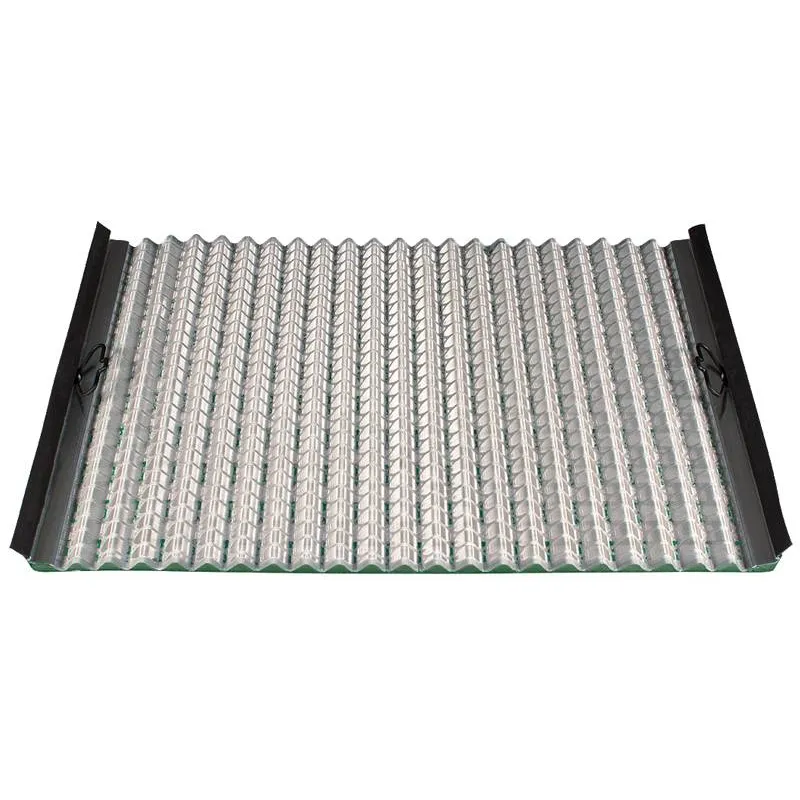- Industrial zone, South of Anping Town, Hengshui, Hebei, China.
- sales@hfpetromesh.com
- +86-18931809706
 Afrikaans
Afrikaans  Albanian
Albanian  Amharic
Amharic  Arabic
Arabic  Armenian
Armenian  Azerbaijani
Azerbaijani  Basque
Basque  Belarusian
Belarusian  Bengali
Bengali  Bosnian
Bosnian  Bulgarian
Bulgarian  Catalan
Catalan  Cebuano
Cebuano  Corsican
Corsican  Croatian
Croatian  Czech
Czech  Danish
Danish  Dutch
Dutch  English
English  Esperanto
Esperanto  Estonian
Estonian  Finnish
Finnish  French
French  Frisian
Frisian  Galician
Galician  Georgian
Georgian  German
German  Greek
Greek  Gujarati
Gujarati  Haitian Creole
Haitian Creole  hausa
hausa  hawaiian
hawaiian  Hebrew
Hebrew  Hindi
Hindi  Miao
Miao  Hungarian
Hungarian  Icelandic
Icelandic  igbo
igbo  Indonesian
Indonesian  irish
irish  Italian
Italian  Japanese
Japanese  Javanese
Javanese  Kannada
Kannada  kazakh
kazakh  Khmer
Khmer  Rwandese
Rwandese  Korean
Korean  Kurdish
Kurdish  Kyrgyz
Kyrgyz  Lao
Lao  Latin
Latin  Latvian
Latvian  Lithuanian
Lithuanian  Luxembourgish
Luxembourgish  Macedonian
Macedonian  Malgashi
Malgashi  Malay
Malay  Malayalam
Malayalam  Maltese
Maltese  Maori
Maori  Marathi
Marathi  Mongolian
Mongolian  Myanmar
Myanmar  Nepali
Nepali  Norwegian
Norwegian  Norwegian
Norwegian  Occitan
Occitan  Pashto
Pashto  Persian
Persian  Polish
Polish  Portuguese
Portuguese  Punjabi
Punjabi  Romanian
Romanian  Russian
Russian  Samoan
Samoan  Scottish Gaelic
Scottish Gaelic  Serbian
Serbian  Sesotho
Sesotho  Shona
Shona  Sindhi
Sindhi  Sinhala
Sinhala  Slovak
Slovak  Slovenian
Slovenian  Somali
Somali  Spanish
Spanish  Sundanese
Sundanese  Swahili
Swahili  Swedish
Swedish  Tagalog
Tagalog  Tajik
Tajik  Tamil
Tamil  Tatar
Tatar  Telugu
Telugu  Thai
Thai  Turkish
Turkish  Turkmen
Turkmen  Ukrainian
Ukrainian  Urdu
Urdu  Uighur
Uighur  Uzbek
Uzbek  Vietnamese
Vietnamese  Welsh
Welsh  Bantu
Bantu  Yiddish
Yiddish  Yoruba
Yoruba  Zulu
Zulu
- Afrikaans
- Albanian
- Amharic
- Arabic
- Armenian
- Azerbaijani
- Basque
- Belarusian
- Bengali
- Bosnian
- Bulgarian
- Catalan
- Cebuano
- Corsican
- Croatian
- Czech
- Danish
- Dutch
- English
- Esperanto
- Estonian
- Finnish
- French
- Frisian
- Galician
- Georgian
- German
- Greek
- Gujarati
- Haitian Creole
- hausa
- hawaiian
- Hebrew
- Hindi
- Miao
- Hungarian
- Icelandic
- igbo
- Indonesian
- irish
- Italian
- Japanese
- Javanese
- Kannada
- kazakh
- Khmer
- Rwandese
- Korean
- Kurdish
- Kyrgyz
- Lao
- Latin
- Latvian
- Lithuanian
- Luxembourgish
- Macedonian
- Malgashi
- Malay
- Malayalam
- Maltese
- Maori
- Marathi
- Mongolian
- Myanmar
- Nepali
- Norwegian
- Norwegian
- Occitan
- Pashto
- Persian
- Polish
- Portuguese
- Punjabi
- Romanian
- Russian
- Samoan
- Scottish Gaelic
- Serbian
- Sesotho
- Shona
- Sindhi
- Sinhala
- Slovak
- Slovenian
- Somali
- Spanish
- Sundanese
- Swahili
- Swedish
- Tagalog
- Tajik
- Tamil
- Tatar
- Telugu
- Thai
- Turkish
- Turkmen
- Ukrainian
- Urdu
- Uighur
- Uzbek
- Vietnamese
- Welsh
- Bantu
- Yiddish
- Yoruba
- Zulu
Feb . 15, 2025 01:25
Back to list
steel grating weights
Steel grating weights are a critical consideration for professionals involved in construction, industrial flooring, infrastructure, and various architectural projects. Understanding the weights associated with steel gratings involves more than merely consulting a specifications sheet; it requires a nuanced appreciation of materials, project demands, and application environments.
The weight of the grating also impacts transportation and installation procedures and costs. Heavier steel gratings might require specialized equipment for handling and installation, affecting project timelines and budgets. Thus, construction managers and engineers must balance between optimal weight for structural needs and practical considerations for installation. With the rise of eco-conscious building practices, the weight of steel gratings also intersects with sustainability efforts. Heavier, durable gratings may reduce the frequency of replacements and contribute to more sustainable project life cycles. Engineers are increasingly evaluating the lifecycle cost benefits of reducing weight while maintaining performance to enhance environmental sustainability. In evaluating grating weights for specialized applications, collaboration with industry experts and leveraging the latest technological innovations becomes invaluable. 3D modeling and simulation technologies are now employed to predict the performance and optimize the weight of gratings in specific use cases, allowing for smarter decision-making that enhances safety, efficiency, and cost-effectiveness. Furthermore, engaging with authoritative sources and platforms, obtaining certifications and compliance from recognized bodies, and seeking partnerships with reputable manufacturers enhances the trustworthiness and credibility of any recommendations or solutions provided regarding steel grating weights. Ultimately, the intimate understanding of steel grating weights does not merely rest on technical specifications but extends to practical wisdom and foresight in application. This complexity demands continuous learning and adaptability to new industry standards, technological advancements, and environmental considerations ensuring that weight concerns translate into improved design, safety, and efficiency in real-world applications.


The weight of the grating also impacts transportation and installation procedures and costs. Heavier steel gratings might require specialized equipment for handling and installation, affecting project timelines and budgets. Thus, construction managers and engineers must balance between optimal weight for structural needs and practical considerations for installation. With the rise of eco-conscious building practices, the weight of steel gratings also intersects with sustainability efforts. Heavier, durable gratings may reduce the frequency of replacements and contribute to more sustainable project life cycles. Engineers are increasingly evaluating the lifecycle cost benefits of reducing weight while maintaining performance to enhance environmental sustainability. In evaluating grating weights for specialized applications, collaboration with industry experts and leveraging the latest technological innovations becomes invaluable. 3D modeling and simulation technologies are now employed to predict the performance and optimize the weight of gratings in specific use cases, allowing for smarter decision-making that enhances safety, efficiency, and cost-effectiveness. Furthermore, engaging with authoritative sources and platforms, obtaining certifications and compliance from recognized bodies, and seeking partnerships with reputable manufacturers enhances the trustworthiness and credibility of any recommendations or solutions provided regarding steel grating weights. Ultimately, the intimate understanding of steel grating weights does not merely rest on technical specifications but extends to practical wisdom and foresight in application. This complexity demands continuous learning and adaptability to new industry standards, technological advancements, and environmental considerations ensuring that weight concerns translate into improved design, safety, and efficiency in real-world applications.
Share
Next:
Latest news
-
Welded Steel Bar Grating: The Rugged Industrial Flooring Solution Built for Load and LongevityNewsJun.24,2025
-
Steel Walkway Grating: Reliable, Resilient, and Built for Every StepNewsJun.24,2025
-
Shale Shaker Screen for Sale: Optimize Drilling Efficiency with Precision Screening PowerNewsJun.24,2025
-
Shaker Screen for Sale: Elevate Your Drilling Efficiency with Durable Separation SolutionsNewsJun.24,2025
-
Press Locked Steel Grating: Industrial Strength with Precision Fit for Heavy-Duty ApplicationsNewsJun.24,2025
-
Perimeter Safety Netting: The Critical Safety Upgrade for Every HelipadNewsJun.24,2025